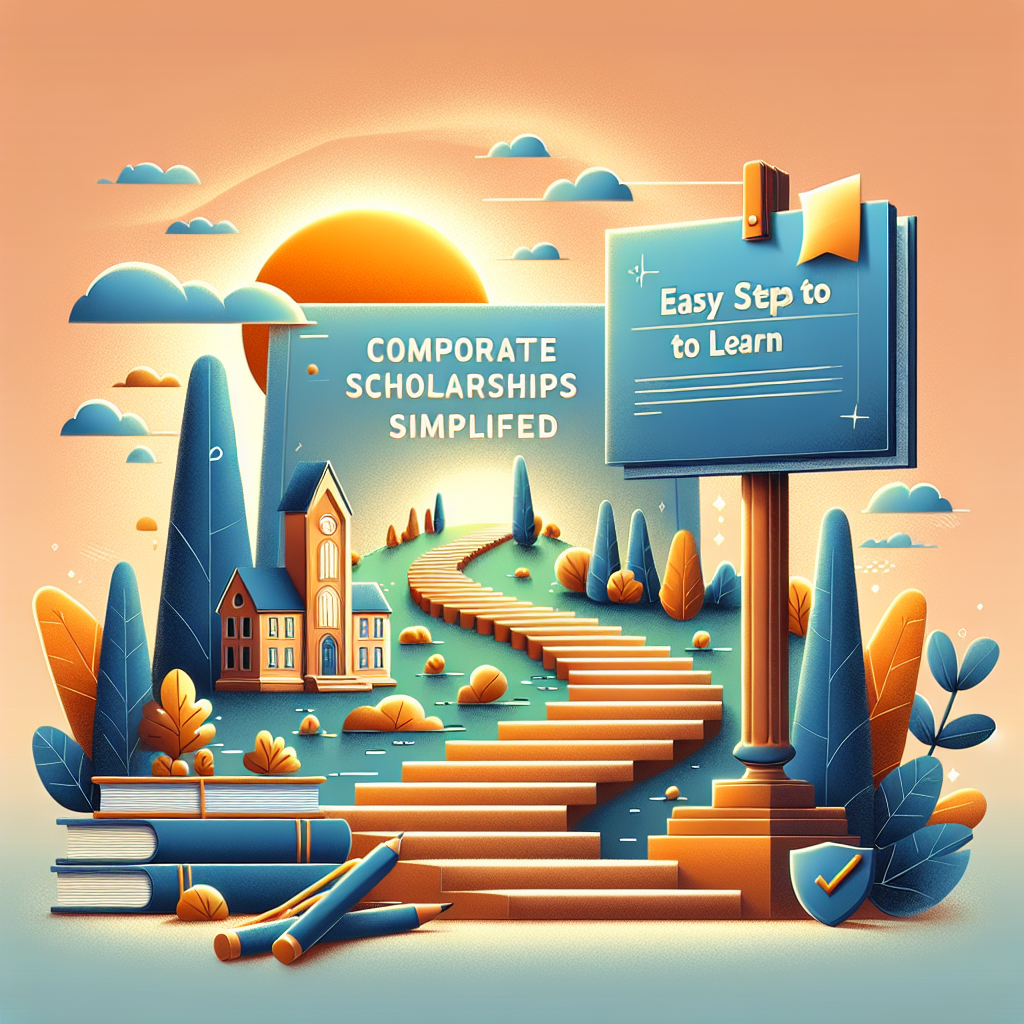Company Scholarships Simplified: Easy Steps To Learn is a straightforward roadmap for anyone who wants to tap employer-funded scholarships without getting overwhelmed. Whether you work for a large corporation, a small business, or you’re a student exploring employer-sponsored opportunities, this guide breaks down the process into clear, actionable steps so you can identify programs, meet eligibility rules, and submit competitive applications.
Company Scholarships Made Simple: Step-by-Step Process
Employer-sponsored scholarships vary widely: some focus on employee dependents, some on continuing education for staff, and others on community members or students in specific fields. Start by learning the types of awards available and where they fit your situation. Companies often post scholarship details on their HR portals, company foundations pages, or through partnered nonprofits.
Step 1 — Identify Potential Sponsors
Begin with your employer and extended network. Check your company intranet, benefits handbook, and internal communications for announcements. Also look at local businesses, industry associations, and corporate foundations that have scholarship programs aligned with your major or career goals.
Step 2 — Understand Eligibility and Deadlines
Read the eligibility requirements carefully. Some awards require proof of employment, a minimum GPA, specific major or career interest, community service, or residency within a service area. Note critical deadlines and submission formats—missing a format requirement or deadline is a common reason strong applications are rejected.
Step 3 — Gather Supporting Materials
Typical materials include transcripts, letters of recommendation, a resume, and a personal statement or essay. Ask recommenders early and give them context about the scholarship’s aims so their letters can be targeted. For transcripts and official documents, request them well before the deadline to avoid last-minute issues.
Preparing a Competitive Application
To stand out, align your materials with the sponsor’s mission. If the company emphasizes leadership, highlight leadership experiences and measurable outcomes. If community service is central, document impact and hours served. Use concrete examples, quantify results where possible, and keep essays focused and proofread.
- Highlight relevant achievements tied to the sponsor’s priorities.
- Use a clear structure in essays: context, action, result.
- Provide concise, organized supporting documents.
- Respect deadlines and submission requirements exactly.
Where Creative Applicants Can Look
Artists and students in creative fields should seek both corporate and specialized arts funding. Many companies support cultural programs and emerging artists; in addition, there are curated resources for creative scholarships that list opportunities by discipline and location. For students specifically seeking art-related awards, check targeted listings such as scholarships for art students to find programs tailored to visual, performing, and applied arts.
Practical Tips and Common Pitfalls
Keep these practical tips in mind:
- Centralize documents in a folder (digital and physical) so you can reuse letters and transcripts.
- Customize essays slightly for each application rather than sending a generic version.
- Confirm submission receipt when possible and keep copies of everything sent.
- Avoid missing deadlines — create calendar reminders well in advance.
Common mistakes include unclear essays, forgetting to tailor materials to the sponsor, and neglecting to follow formatting rules. Make sure to proofread and, if possible, have a mentor or peer review your application before submission.
How Company Scholarships Fit with Other Aid
Company scholarships can complement federal and institutional aid but usually do not replace them. Ferried with other sources, they can reduce debt or cover costs that other grants don’t. For a clear overview of how scholarships and grants interact with federal aid options, consult the federal student aid resource for types of financial assistance at federal student aid: types of aid. That resource helps you understand where company scholarships fit into the broader financial aid ecosystem.
Short Checklist Before You Apply
- Confirm you meet all eligibility criteria.
- Compile and format documents as required.
- Tailor your essay to the sponsor’s values.
- Submit before the deadline and retain proof of submission.
FAQ
Q: Can company scholarships be used for part-time study?
A: Some employer scholarships allow part-time enrollment, while others require full-time status. Always check the eligibility rules or contact the program administrator to verify allowable enrollment types.
Q: Are company scholarships taxable?
A: Tax treatment varies by country and the nature of the award. In many jurisdictions, scholarships used for tuition and qualified education expenses are tax-free, but stipends or awards for non-qualified expenses may be taxable. Consult a tax advisor or official tax guidance for specifics.
Q: How do I improve my chances if many applicants apply?
A: Focus on demonstrating fit: match your essay and materials to the company’s mission, showcase measurable impact from your experiences, and provide well-crafted recommendations that reinforce your candidacy.



